If their ancestor, the Bullenbeisser, knew what would become of Boxers, he’d be puzzled. The Bullenbeisser was a tough dog with a high energy drive, but the Boxers we know today are gentle souls that serve as working dogs or guard dogs only if they want to.
Even though Boxers have herding genes kicking in from time to time, they’re actually considered one of the finest pets a family could ask for. Boxers are kind, friendly, and affectionate. With proper socialization, they turn out to be ideal dogs.
All About The Boxer Breed
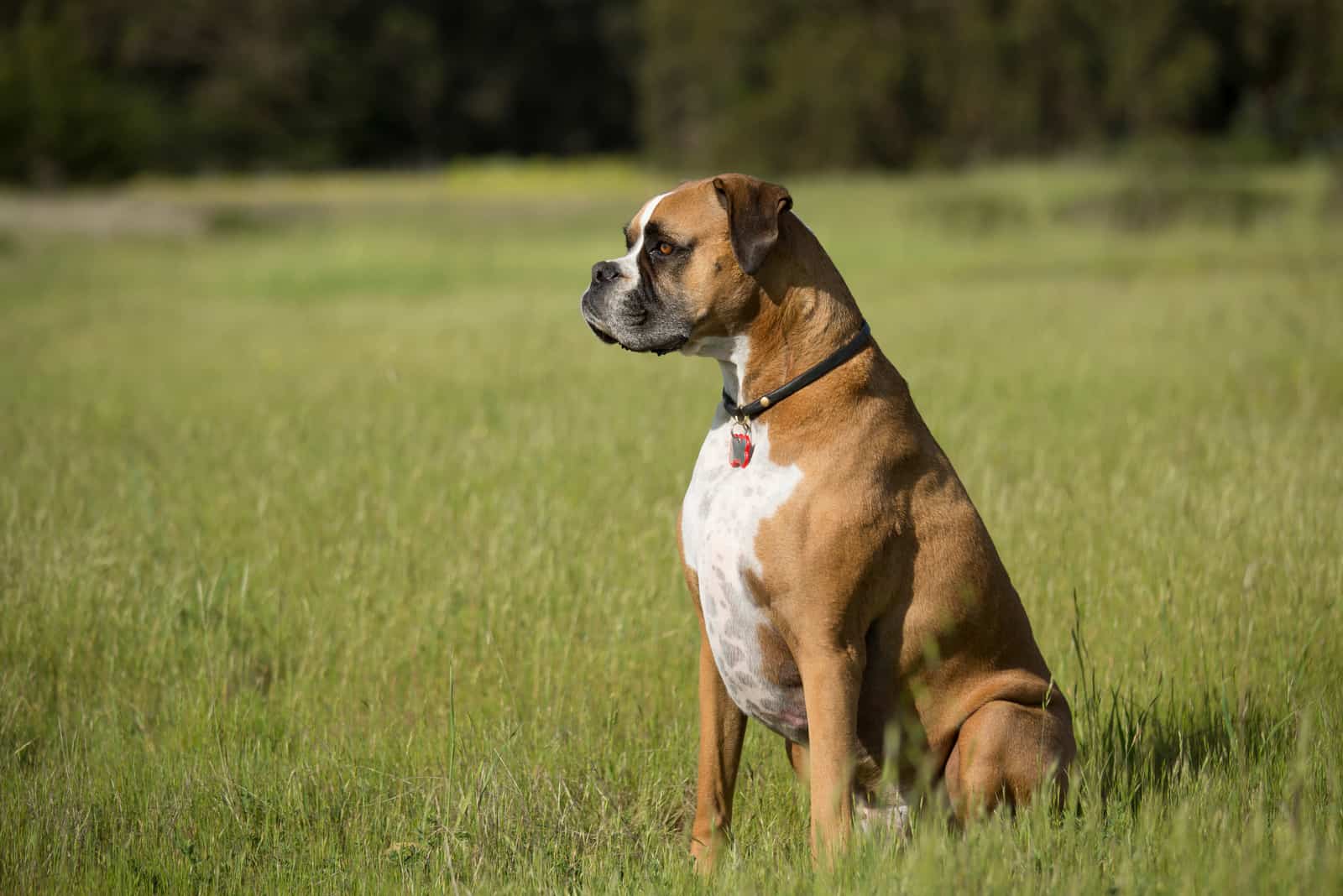
Boxers are large, muscular, square-headed dogs that might look intimidating at first. But then, you’ll get to look into their eyes and see all the mischief and joy in life in those two little marbles.
Often called the Peter Pan of the dog breeds, Boxers are playful dogs with a high energy drive. What makes them so playful is the fact that a Boxer is not considered an adult until it is three years old! They have one of the longest puppyhoods in the canine world! Do these puppies become easier? Sure!
Your average Boxer is a smart pup that is alert and fearless, but still very friendly. They’re loyal protectors of their family, and they love to spend time playing games. However, they’re also headstrong and need a firm hand when going through training.
Boxers make excellent family dogs because of their minimal grooming needs and general patience with children. As long as you give your Boxer adequate physical exercise and mental stimulation, these pups may even live in apartments.
Boxers are originally from Germany. They were brought to the USA after World War I. The American Boxer Club was founded in 1935. The biggest difference between European Boxers and American Boxers is that the European ones have a bulkier body.
Their short and shiny coat comes in striking colors, such as fawn or brindle, with flashy white markings. All white Boxers are not desirable because their coat color is often linked with deafness.
Many Boxers have docked tails and cropped ears. If the ears aren’t cropped, they will be floppy. Docking and cropping are still popular practices, but the ears and tails should be left all-natural.
The only thing you can do with your Boxer’s ears is occasional hair plucking to prevent infections.
Boxers are known for their affection and loyalty to their families. They’re sometimes a bit aloof and don’t trust strangers. However, they are not aggressive unless they believe there’s a threat to their family. Boxers are so loving that they even think they’re lap dogs, so they try to squeeze into your lap and cuddle.
Boxer owners especially appreciate their clownish behavior. These dogs are high-spirited, happy, and almost hyperactive dogs. What’s so funny about them is that Boxers have specific behavior patterns when they’re excited. For example, Boxers will often paw cat-like at their toys, food bowls, and even humans.
Also, Boxers tend to do something called the “kidney bean”. It’s a little dance they do that involves twisting their bodies into a semi-circle, similar to the shape of a kidney bean, and then they turn into circles.
Boxers also make a unique sound called “woo-woo” when they’re too excited. It’s not a bark, but rather a sound as if they’re saying: Look at me!
Still, a Boxer’s life isn’t all fun and games. These dogs have wide use in the military and police forces, as well as search and rescue missions. If they’re trained for guard work, Boxers will make excellent watchdogs and will restrain an intruder the same way a Mastiff would.
Boxers are excellent in all sorts of training, including tracking, obedience, and protection training.
Boxers shouldn’t be left outside for too long. They have short noses that don’t cool hot air in the summer, and their short coat doesn’t keep them warm in the winter.
Boxers aren’t a breed for everyone. But, if you’re a fan of dogs that love to cuddle, drool, and make you laugh, then this is definitely the pup for you.
How Big Are Boxers?
Male Boxers are usually 22.5 to 25 inches tall at the shoulder. They weigh around 70 pounds.
Female Boxers are a bit smaller. They stand tall at 21 to 23.5 inches, and weigh around 60 pounds.
Other than the size and weight differences, there are no other major differences between male and female Boxers.
Boxer Coat Color And Grooming
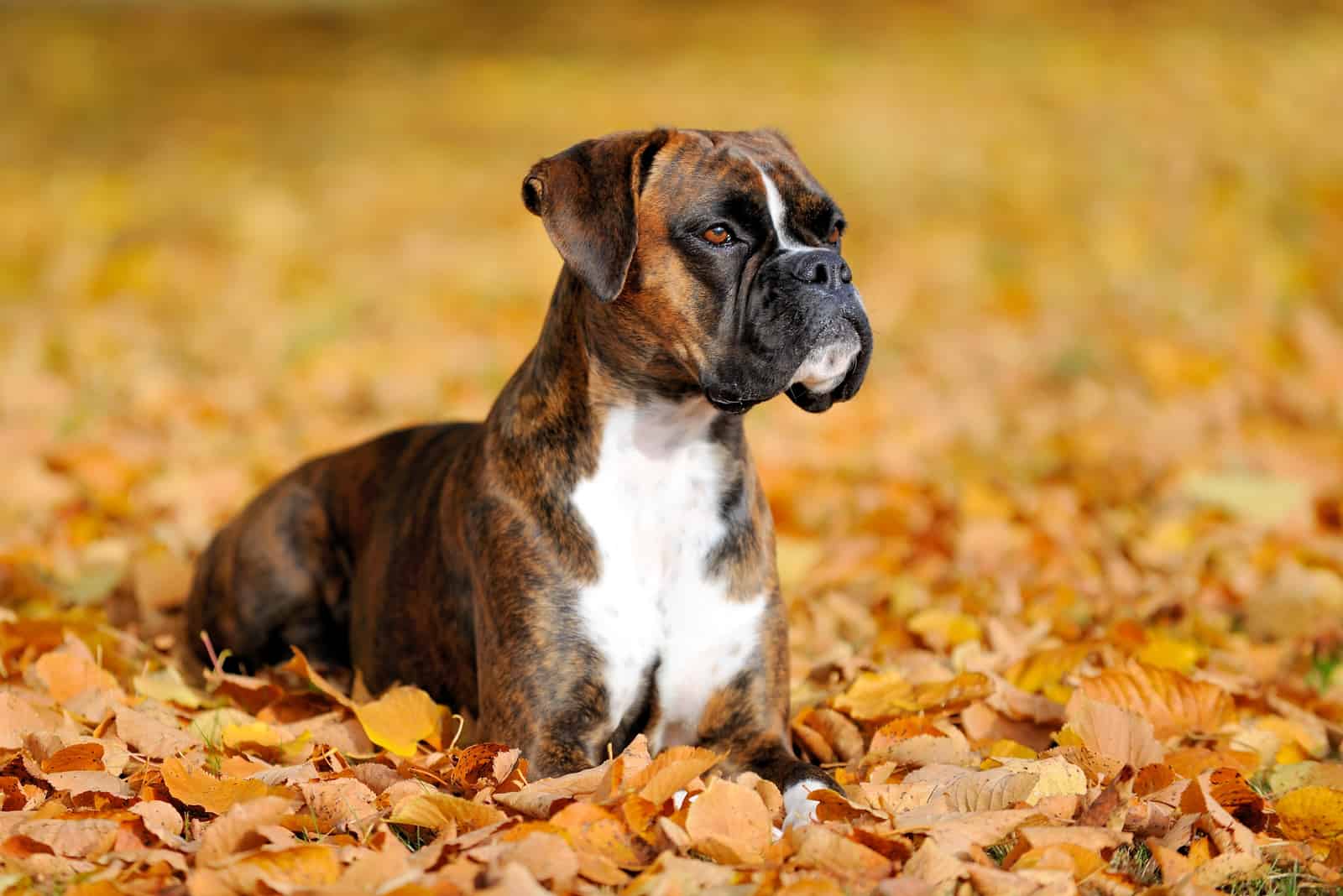
Boxers have sleek and short coats, with tight skin over their athletic bodies. Boxer colors come in two options: fawn and brindle, with or without white marking. Fawn color ranges from light tan to mahogany. Brindle is a striking tiger-striped pattern of black stripes on a fawn background.
White markings appear on the belly or feet, but they’re not supposed to cover more than one-third of the coat; otherwise, they will be classified as parti. If the white extends on the neck and face, the color is called flashy fawn or flashy brindle. Boxers without white patches are called plain Boxers.
The face of a Boxer is covered by a black mask, sometimes with a white stripe or a blaze running up the muzzle between the eyes.
Boxers don’t have a gene for a solid black coat color. You’ll never see a black Boxer. In the UK, fawn Boxers are usually called red since they’re rich in color.
If the white markings cover more than one-third of the body, it will be disqualifying in the show ring. Excessive white markings in Boxers mean that those pups are more susceptible to severe health conditions, such as cancer or deafness.
A reputable breeder would never pass on such genes. In fact, breeders in the past used to euthanize white puppies at birth. Today, that practice is abandoned, so breeders put white puppies in pet homes.
Even though white Boxers aren’t supposed to be bred or participate in dog shows, they can still compete in obedience and agility.
The Boxer coat needs minimum grooming. They’re clean dogs that even clean themselves like cats. Don’t tell anyone, but they’re way better than cats!
Boxers shed a bit, but weekly brushing will keep it under control. Boxers aren’t hypoallergenic (no dog is), but they’re allergy retardant.
Colors Of Boxer Dogs
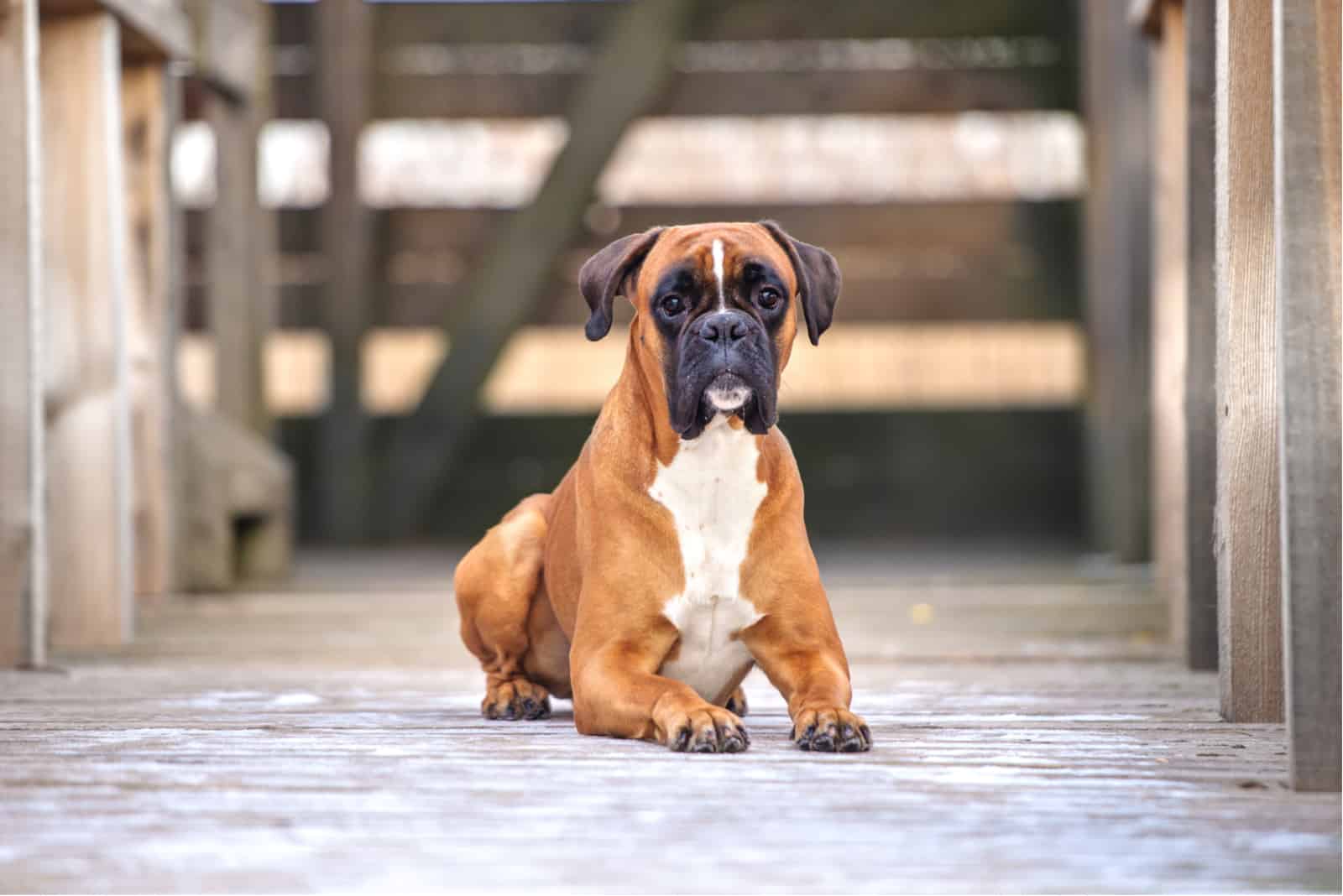
If you’ve decided to get a Boxer, then you’ve made an excellent choice. Now, all you have to do is choose a Boxer color. Good thing you don’t have too many colors to choose from. It would be a difficult decision.
Boxers come in three stunning colors. However, only two Boxer colors are recognized by the AKC as standard colors. Also, Boxers come in five different types of coat markings, but only three of them are recognized.
What you should know is that it doesn’t really matter which color combination you get. None of them have an effect on the dog’s personality. What matters is that you choose a dog that will fit you and your lifestyle.
Here are the mentioned Boxer colors:
• Fawn
• Brindle
• White
These dogs come with distinctive markings on their coats.
There are five markings categorized by the American Kennel Club:
• Black Mask
• Black Mask with White Markings
• White Markings
• Brindle Markings
• Fawn Markings
The first three markings are standard color markings for the Boxer breed. White, brindle, and fawn markings are not standard.
Many Boxers have fawn or brindle as a base color, but they also have several variations of markings on their coat.
Boxer Colors: Fawn
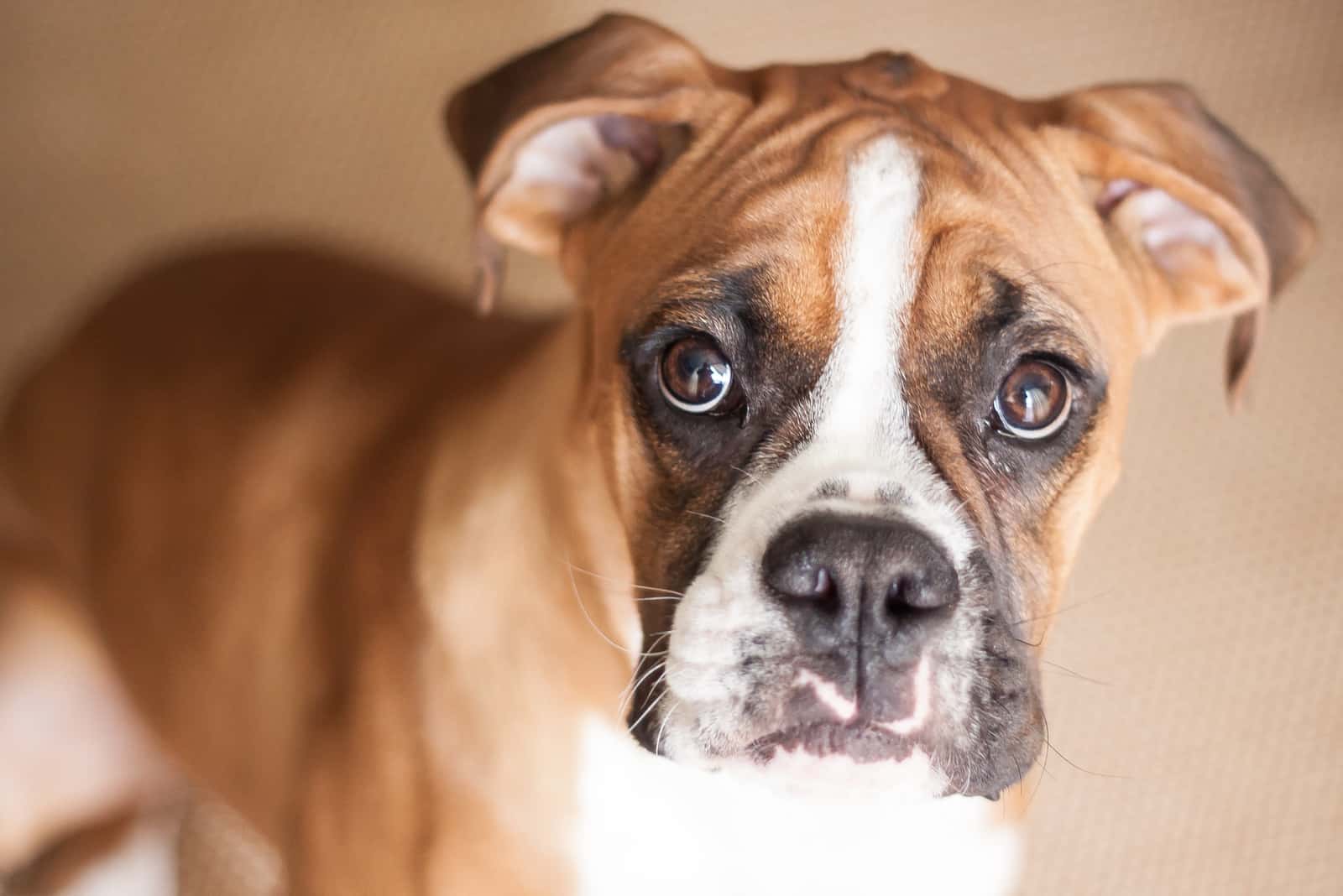
A fawn-colored Boxer is probably the most popular out of the three available Boxer colors. It sports the iconic look of the Boxer dog breed.
However, fawn is not an exclusive color to Boxers. Purebred dogs like the Beagle or the Chihuahua also come in fawn. Even mixed breed dogs like the Chiweenie or Gerberian Shepsky come in fawn.
Fawn is a light brown color resembling milk chocolate. Still, this shade of brown may vary depending on the dog.
Most fawn Boxers have a sleek brown coat with a black mask and white markings. The black mask means the black muzzle, while the white markings can be seen on the necks, paws, and even on the face.
Fawn Boxers are probably the most attractive of all Boxer colors, and they are quite popular in the dog community.
Fawn Boxer Puppies
The Boxer is a popular dog breed, so it will be easy to find the exact type of fawn Boxer you’re looking for.
But, before you buy a Boxer, it’s important to find a responsible and reliable breeder who will run all the necessary tests for health issues. A Boxer’s health tests can take the form of blood and DNA tests, X-rays, heart monitoring, and echocardiograms.
Even though a puppy may not be tested for all health issues, your breeder can still test the puppy’s parents and provide you the test results.
Health testing information should be certified by an official canine health institution like the Orthopedic Foundation for Animals.
Besides asking for health test results, you should ask to see the litter or a specific fawn Boxer puppy in person. A healthy puppy has clear eyes, clear ears, a clear nose, a shiny coat, and a well-formed stool.
A curious, playful, and comfortable-around-people puppy is always the safest choice.
Is A Fawn Boxer Dog The Right Dog For You?
Boxers are one of the most popular dog breeds and they have a good reason for it. They’re loyal, energetic, smart, and brave pups.
The Boxer is a handsome pooch, but a fawn Boxer is an especially attractive one. The fawn coloring comes in a variety of shades, from light to dark tones. So, you will need to choose the one you fancy the most.
In case you love dogs with amazing personalities, then this is definitely the dog for you!
Boxer Colors: Brindle
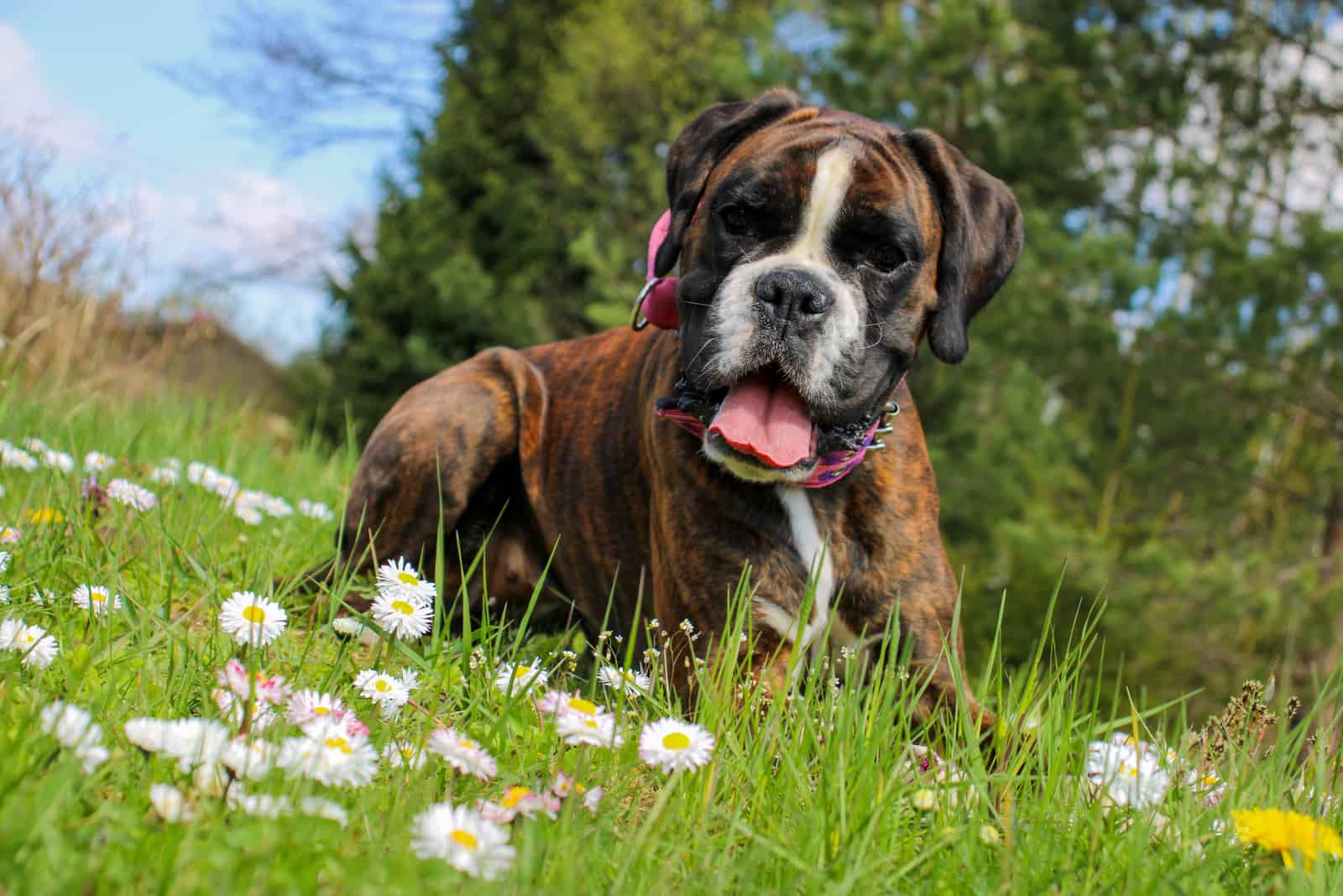
The brindle-colored Boxer is the second most popular color for this dog breed.
Once again, this is not an exclusive color to this dog breed. French Bulldogs, Pitbulls, and many other dog breeds also carry it.
What’s so unique about brindle Boxers is not their coat color, it’s their coat pattern! Still, dog experts categorize brindle as a general color for simplicity.
Brindle Boxers have a base coat in fawn. But, they have the unique trait of having black-colored striping on their coat. A Brindle Boxer almost looks like a tiger, which is why some people call them “tiger stripes”.
There are a lot of variations with the brindle Boxer coat color. The stripes can vary from black to lighter or darker shades. Also, the stripes can be either thick or thin. If you’re wondering what your brindle Boxer puppy will look like, check Boxer’s parents for stripe density and coloring.
Sometimes, the stripes are so thick and dark that the Boxer looks like a solid black dog. However, we already mentioned that a black Boxer is not possible.
On the other hand, Boxers with very light stripes can resemble fawn Boxers.
These brindle dogs usually have a black mask and white markings on the chest, paws, ankles, and face.
Other brindle Boxer markings include only the black mask and no white markings. This is not very popular, but those markings are quite common with brindles.
Both markings, along with the brindle color, are standard and officially recognized. These fit Boxers very well, and almost always come with brindle-colored pups.
What Is A Reverse Brindle Boxer?
The most common or standard brindle type is a light-colored base with dark markings.
However, reverse brindling is also possible. When a dog is a reverse brindle, it has a dark background and lighter stripes. It is sometimes referred to as an inverted brindle boxer.
Are Sealed Boxers Rare?
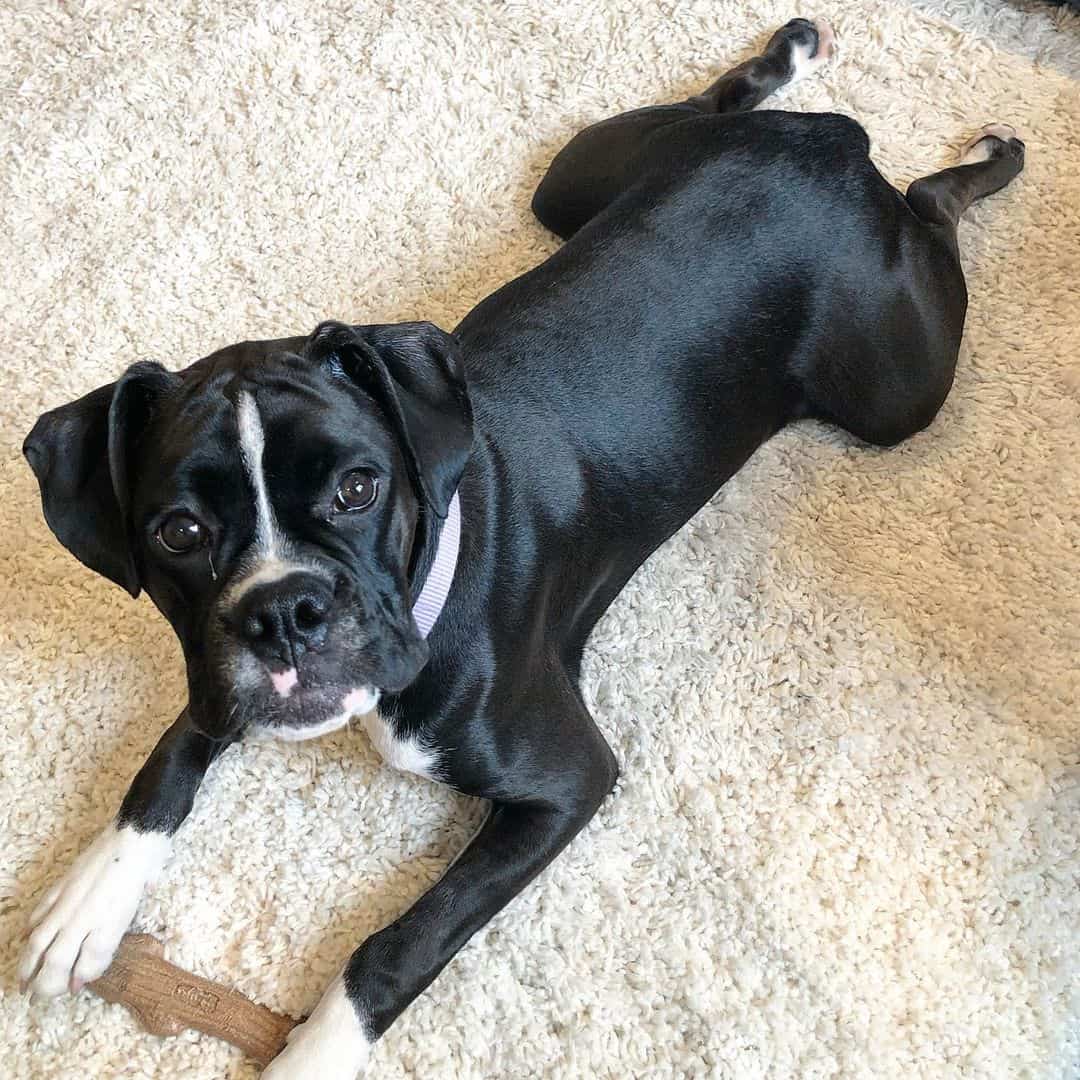
Photo from: @superboxernova
The rarest coloring of all Boxer colors is the sealed brindle Boxer. These appear black because their black stripes are sealed shut, so you can’t see any fawn stripes.
Some unreliable breeders try to sell these Boxers as black Boxers. But, as you already know, they’re not black at all. They only appear black with thick, close-set black stripes.
What’s A Flashy Brindle Boxer?
It’s not unusual for a Boxer dog to have a white underbelly and white feet. Sometimes, the markings will go up the neck and on the face. It’s called a flash or a flashy brindle Boxer if there’s a lot of flash on the coat.
Brindle Boxers Health Problems
Just like all the other purebred dogs, Boxers have some health conditions that they’re more prone to.
Those health problems include:
• Heart problems
• Eye problems
• Skin problems
• Hip dysplasia – a condition where their hip joint doesn’t sit quite right, and it can cause arthritis later on in life
• BOAS (breathing problems for some with short faces)
• Epilepsy
• Certain cancers
• Aortic stenosis
• Cardiomyopathy
Of course, this is just a list of possibilities. This doesn’t mean that your Boxer puppy will definitely suffer from any of these conditions. They’re just possible risk factors that you should know of when getting a Boxer.
To reduce the risk of your puppy suffering from these conditions, you need to buy from an AKC-compliant breeder. They have much higher breed standards than regular Boxer breeders, and they will take any necessary tests to find any health issue.
For example, all parent dogs that will be used in the breeding process need to have X-rays proving that their joints are healthy and they’re less likely to pass on genes that will cause hip dysplasia in puppies.
Are Brindle Boxers Pricey?
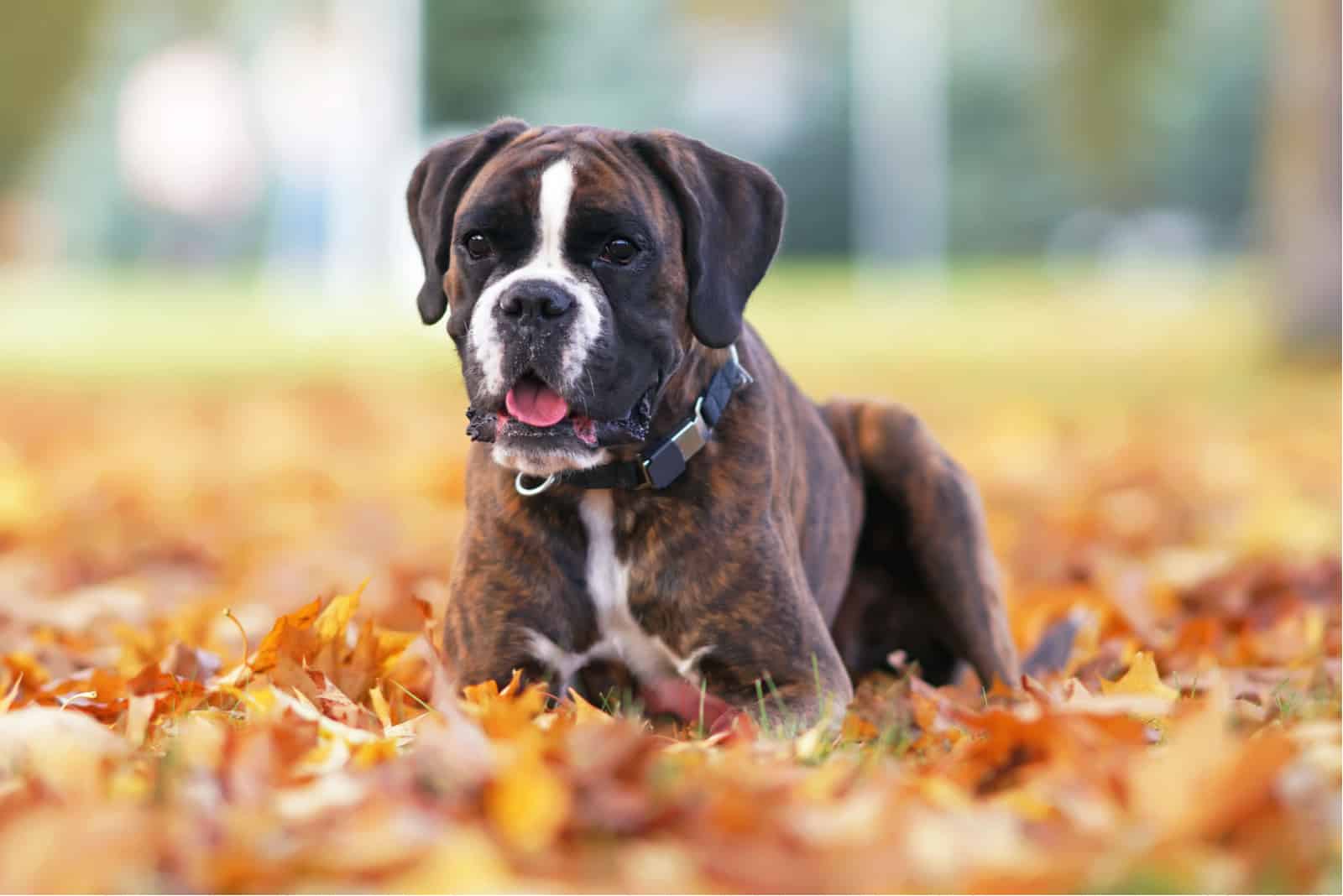
On average, brindle Boxer puppies can cost from $800 all the way up to $3000! It depends on the breeder and genetics. You should set a budget that you can realistically afford, and don’t look for puppies above that price range.
As a rule, AKC registered breeders always cost more than backyard breeders, but they come with peace of mind about the puppy’s genetics and temperament. However, if you’re not focused on genetics and getting show-quality puppies, then you can look at other dog breeders; those who will provide a healthy and happy puppy.
The initial buying price is not the only cost you’ll have with these dogs. You will also need supplies for your new Boxer puppy, along with enough money for dog food, toys, vet checkups, and ideally, pet insurance. You didn’t expect your Boxer to eat spicy food and Doritos with you on the couch and snooze all day, did you? Give them something healthier like sour or whipped cream, artichokes, or some fruits like papaya.
Boxer Colors: White
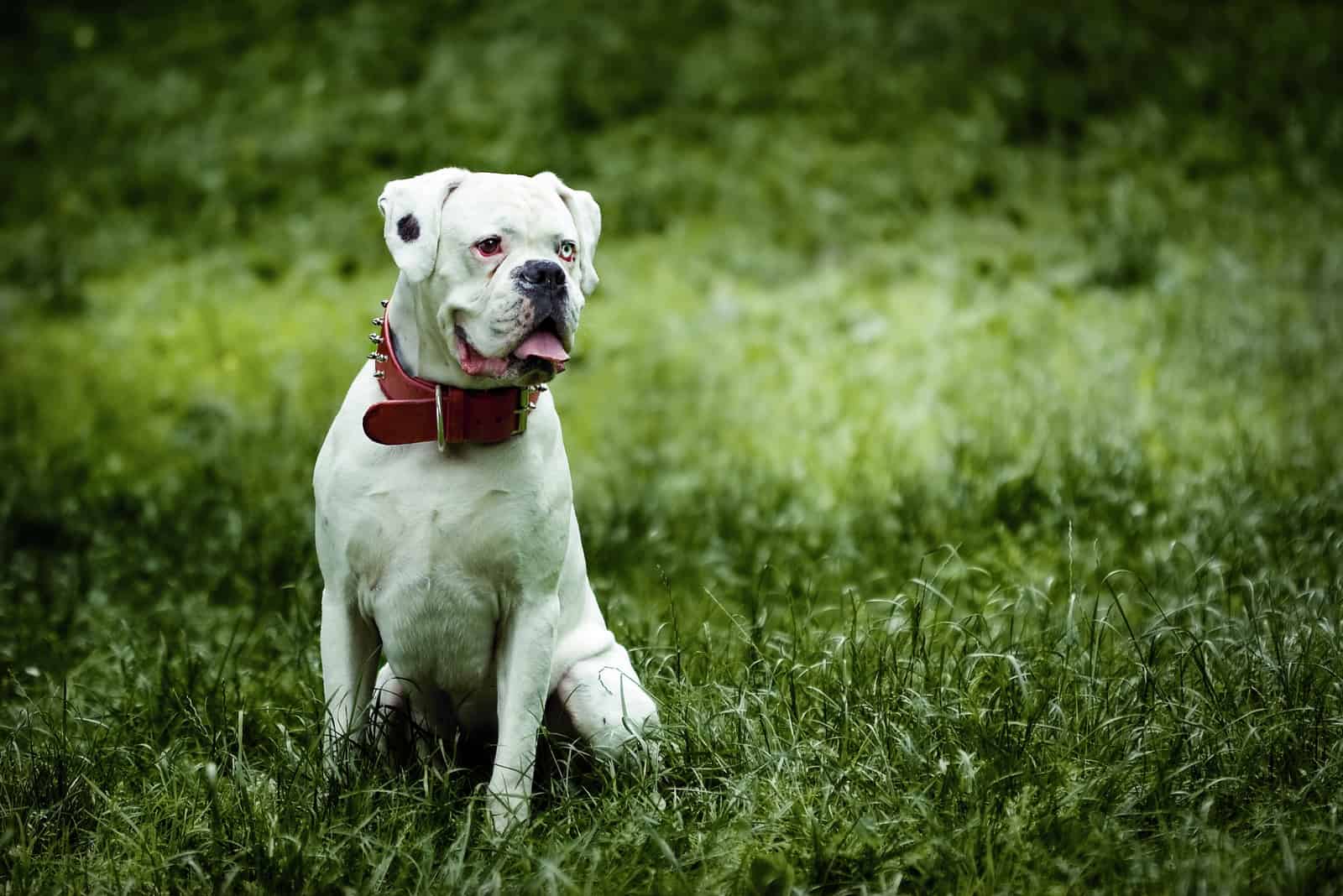
Among the three possible Boxer colors for a purebred Boxer, the white color is the only one that’s not considered a standard color. At one point in time, white Boxers were widely popular and officially recognized as a standard color by the AKC.
Though it’s still recognized, it’s not a “standard” anymore.
While it’s true that white Boxers aren’t the standard, they’re still fairly popular. In fact, 25% of all Boxers in the United States are white, and surely, these colors will continue to be bred as people consider them unique and appealing.
Keep in mind that these dogs are not rare, and breeders demanding a premium for a white Boxer should be avoided. The white color gene is recessive, so as long as both the mother and father Boxer have this gene, you will get a white Boxer.
Never mistake a white Boxer for an albino one. Albinism is a serious genetic condition where there is no pigmentation in the skin. White Boxers have pigment, but they only have the color white.
White Boxer Coat Markings
Markings on a white Boxer are much more unpredictable than with a fawn or a brindle Boxer.
Some white Boxers are solid white with no other markings. On the other hand, some only have brindle markings. Still, the most common marking of them all is fawn, a darker shade than usual.
The placement of these markings varies a lot. Most of the time, white Boxers will have an eye patch marking, where color would appear around one eye.
Issues With White Boxers
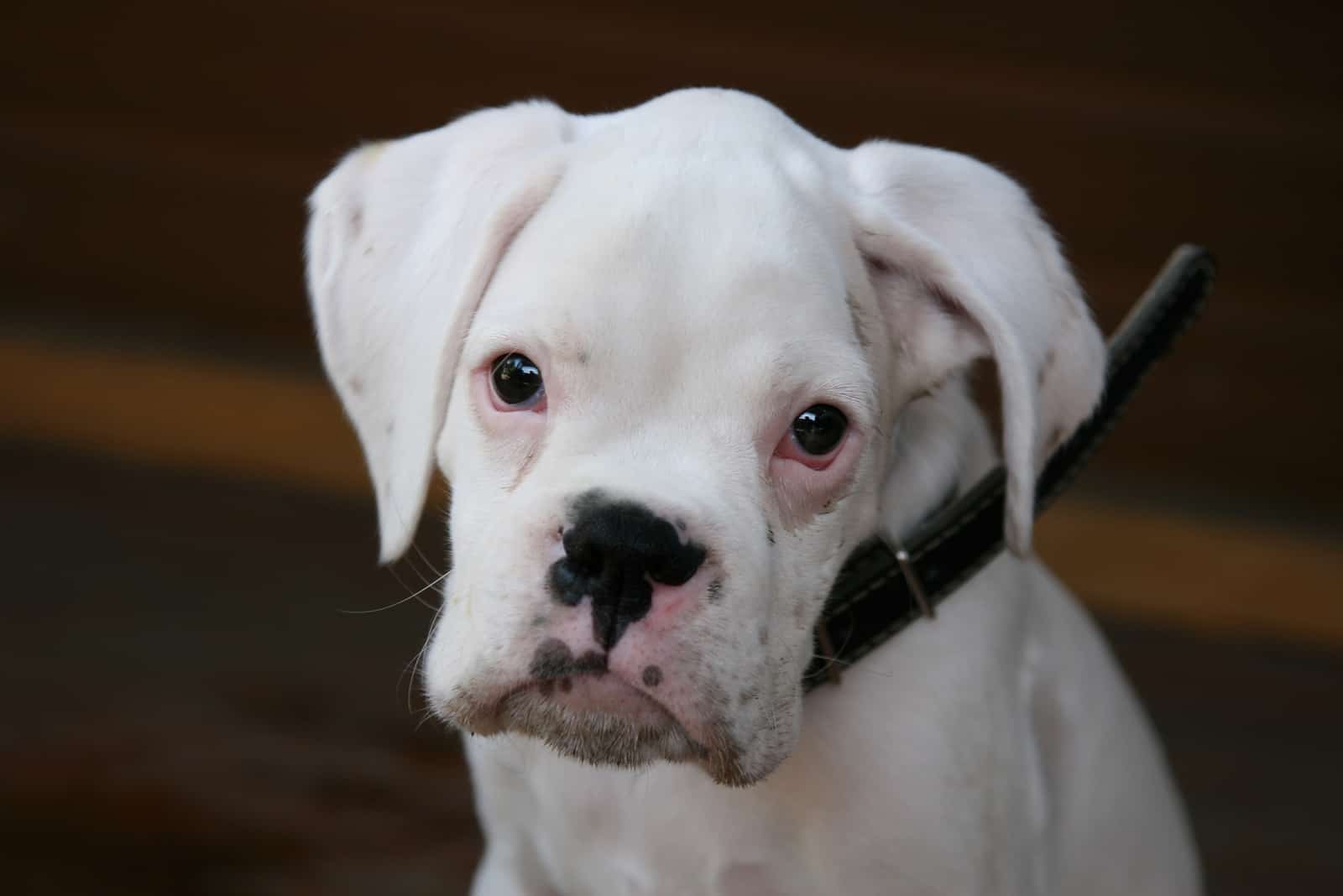
Despite the popular belief that all white Boxers have lots of health problems, the truth is far from that. However, this doesn’t mean that there’s nothing wrong with them.
The biggest health concern in white Boxers is deafness. Almost 18% of white Boxers are born deaf.
Deafness can be caused by the lack of pigmented skin in the inner ear of the dog. It leads to atrophy of the nerve endings in the crucial period, just after birth.
Even if your white Boxer turns out to be deaf, it can still be a wonderful pet, and it can even be trained! They don’t rely on sound for commands. These Boxers are highly skilled in ready body language and relying only on visual cues. If you’re using only your hands to train them, you both will be fine.
Other than this, a white Boxer is no different than any other Boxer. Each Boxer pup has its own personality and temperament. They all have the same chance of developing aggressive behavior.
Being white doesn’t affect the Boxer’s visual traits or personality traits.
Boxer Colors; Black: Is It Possible?
There’s a lot of talk about black Boxers. Some potential Boxer buyers are even actively seeking out these puppies. But, their search is in vain.
Even though the photos may say differently, there is no such thing as a black Boxer. Boxers don’t have the gene responsible for the black coat color. If you do see a black Boxer, step closer and you’ll see that that purebred Boxer is only a very dark brindle.
Unreputable breeders often use the ignorance of many people to sell them black Boxers. Sooner or later, as the puppy matures, they will figure out that they’ve been fooled.
Price: How Much Are Boxer Puppies?

The average Boxer price starts at $1,000 and can go up to $2,000. Of course, there are Boxers, as we already discussed, that cost a small fortune.
Usually, a Boxer puppy from a reputable breeder costs around $2,000. But, a puppy coming from a superior breed line will cost up to $4,500!
It’s only up to you to decide your budget and choose from a show quality or a pet-quality Boxer.
In case Boxers are too expensive for you, you might want to consider getting one of their mixes, like the Corgi Boxer mix or the Cane Corso Boxer mix.
Conclusion

Good thing Boxer colors only come in three standard variations. Otherwise, it would be awfully difficult to choose the cutest one of all these adorable Boxer puppies. Now, all you have to decide is which color and which dog name your Boxer should have.
The Boxer dog breed is one of the finest in the canine world. If you’re looking for a puppy in the shape of an adult dog, look no further. Stop here and pick whether you want to take home a fawn, a brindle, or a white Boxer.
Read Next: Great Pyrenees Colors: Truth About White Mountain Dog















